(Note: When I use " town", "community", or "village" I'm referring to my placement site - and many thanks to Sarah who took a lot of these pictures!) It’s rainy season in South-Central Mexico. Here in Cuernavaca big clouds stretch across the sky and bring refreshing, chilly winds, light sprinkles and sometimes lightening and booming thunder when heavy rains enter into this urban basin. In the community where I work each Wednesday through Saturday (waaaay up in the mountains, about two hours outside of Cuernavaca), it seems like it rains even harder. At the Center there’s an abrupt whipping noise as rain pounds on the tent above our table, and a cracking wind that tosses around plants and tall tree branches. As the rains rush down sloping hills, crops along the mountainside are nourished; dirt and debris wash from the top of steep, narrowly paved roads. A rural nighttime bath. This also seems to be the time of year for fiestas. September 8 was the Nativity of the Virgin Mary, an important day of observance and celebration for many Catholics. Nearby the Center, pre-recorded church bells rang early each morning around 6am - give or take half an hour - and minutes later a band would perform the most, well, interesting arrangements. Trumpets, saxophones, drums, and cymbals clashing together preceded a day full of activity. Those of us of us at the Center would joke that the only way to get through the constant noise was to focus on only one instrument at a time, since each person in the band seemed to be playing their own creative tune. Then all day music blasted from radios and cars, accompanying many processions, some religious and some not, throughout the town. Marigold flowers, incense, statues of La Virgen de Guadalupe and other saints were carried up and down the roads by crowds of men, women, and children. Sometimes this was a solemn procession and at other times I saw men dancing at the front with Mexican folk art figures and colored masks. Fire-crackers would burst overhead from time to time and, without fail, each shot startled me! Many streets in Cuernavaca are still bright with the colors of the Mexican flag: green, red, and white. On Tuesday September 15 we celebrated el dia de independencia, the Day of Independence. That night all five of us YAGM volunteers met downtown at the zocalo, or city square, surrounded by lots of people celebrating, eating food, dancing to live music, etc. There was also a giant clock counting down the days, hours, and minutes to Mexico 200th anniversary of independence - next year, 2010. Even though streets were blocked off from regular traffic, they were nonetheless congested with vendors selling traditional Mexican dishes like steamed corn, quesadillas, warm atole (a corn-based drink), pozole (a soup made of chicken, hominy corn, and spices), and more. (Check the website later for some recipes!) A mariachi band played close to the hour when everyone gathered together to join in on the Grito de independencia, the shout for independence, at 11pm. Under pouring rain (big surprise?) the crowd shouted “Viva!” as the names of heroes, both men and women, were commemorated in the fight for Mexico’s independence from Spain. Finally, from the balcony of the Palacio Municipial, the municipal president declared Mexico’s independence from Spain and the words “Viva Mexico!” echoed all around. White silly string flew into the air, showering the crowd where kids, sitting on top of their parents shoulders, blew whistles and noisemakers, and a collective yell filled the city square as the bell rung, signaling that Mexico has declared itself a free and independent nation. After this ceremony the Mexican national anthem played and then under a haze of patriotic fervor and euphoria, an exciting burst of fireworks lit up the sky. The celebrations aren’t over yet! We’re still in the month of fiestas patrias, so this past week outside of Cuernavaca was also full of excitement and energy. On Wednesday morning as we drove to the Center, there were lots of parades along the roads where school children, who had the day off, marched along with la Reina, the queen, of the parade. Since school in the afternoon was cancelled, Sarah and I watched some of the town’s celebration. We saw bailes which are traditional dances, a folk singer, as well as presentations and short poems read aloud by students and their teachers. I was so excited to hear a poem read in Nahuatl! A few feet away there was a game for the men where they had to climb up a greased pole in order to bring down shirts, jeans, and other clothing that were tied at the top. The man pictured below is the only one who made it! It was an interesting contrast that the crowd seemed so much more reserved than in Cuernavaca. There was hardly any applause after each performance and I noticed that all the entertainment was brought in from another town. Performers, wearing the same colors as the Mexican flag, stood out against the women who use dark indigo blue or russet shawls. This strange mix of civic pride and traditional culture in Mexico really grabs my attention. It’s like there are two different Mexicos. I think the contrast is made even more visible in the community outside of Cuernavaca where I still can’t figure out how patriotism fits into the community’s identity. I wonder if people in marginalized communities, like the one I’m placed with, really feel free and democratic since their context is a product of failed policies, empty promises, and disempowerment. I won’t be able to understand this in only a year but it’s interesting to think about. The exposure to the bustling, full of go life in Cuernavaca against the more isolated and rhythmic pace of life where I work is fascinating. A challenge has been dealing with my own hopes for a better future and instead seek to understand others’ hopes and dreams. This has definitely opened possibilities for people to explain why or how “things” work, to describe reality based on their own experience, and in the process deepen all I can learn from others’ perspectives. I’m also trying to ask better questions and learn more about the issues people face and my role in them which, again, isn’t possible in a year.
It feels like time is flying and I’m not even a month in - but even in this short amount of time, the power and beauty of people’s stories has been the most precious gift, adding to an even more enriching, eye-opening and life-giving experience. I’m so glad to be able to share parts of my story with you who support and encourage me. I’m thinking of you often, with gratitude, joy, and peace.
4 Comments
I had an unsuccessful attempt at a nap today and ended flipping through the index of my trusty Cuernavaca map, which, believe it or not, actually became really interesting once I came across some of the more hard-to-pronounce street names.
Here are the top 5: - Ixcateopan - Miahuaxochitl - Netzahualcoyotl - Popocateptl - Tepeyehualco And I thought I’d add this one on the list, too (it’s my personal favorite): Xoxocotepola Phew! Nope, those are definitely not Spanish words or names. This is Nahuatl, an indigenous Mesoamerican language that is still spoken in some parts of central Mexico today. Nahuatl is spoken by some of the older people in the community where I'm placed this year. Sarah (another YAGM volunteer who I’m working with this year) and I had the opportunity to visit this community on Saturday. We had a mini-orientation into the kind of work that the organization is involved in and it was a chance to get a feel for what life is like in this Nahua community – especially when we were invited to observe and participate in some of the indigenous traditions such as basket weaving (which looks easy but it’s not!) and making corn tortillas (I need some practice). I was really struck by the complexity of this community because for so long it has been able to retain its traditions, language, and culture but it’s now undergoing so much outsider influence. We walked by lots of stores with the Coca-cola brand logo brightly painted in front and a Pepsi truck drove through the town (like it does each and every day), passing by women wearing shawls as they have for generations. From weaving baskets made out of palm, hearing about this indigenous tradition as well as its importance for the economic survival of the community, to making room for perfectly flat, round tortillas by scraping away at my own that were too small, too lumpy, and broken apart on the open-fire grill, and searching for deeper answers to the questions that swim around in my mind after our first visit, I left wishing that I had a fuller sense of how all these activities play out in the pattern of daily life. Patience and trust, I keep telling myself. The fresh, familiar feelings of what is unknown, like the street names, or the amateurish basket and crumbly tortillas that I made, even though they may be superficial examples, are part of a host of situations where doors are opening to new experiences -- doors to new possibilities and understanding. These are just some of the things that are becoming part of a more full, abundant experience as time goes on. So instead of ignorance and fear of what seems different, strange, or mistaken, I'm learning to be patient with (and trust!) the process where the hope, wonder, and surprise of the moment continues to amaze me so far. Below is a picture of the basket I made. The one with gaps, holes, and pieces of palm sticking out in odd places is mine. And behind it is a “real” one. You can tell it’s woven much tighter, neater, and it’s more detailed; definitely made from more experienced hands! |
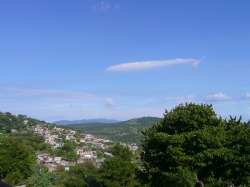
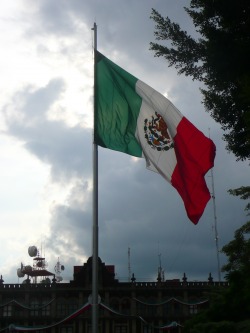
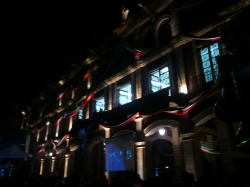

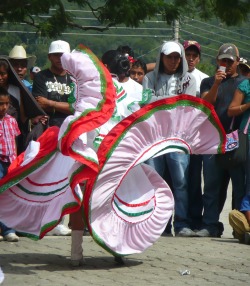

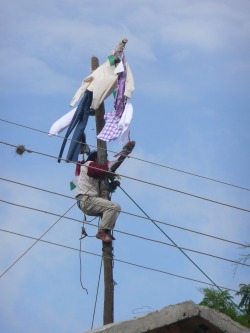
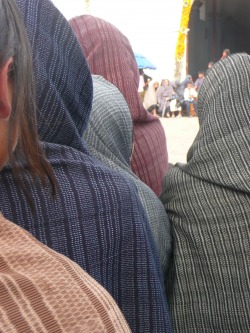
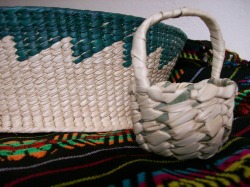
 RSS Feed
RSS Feed